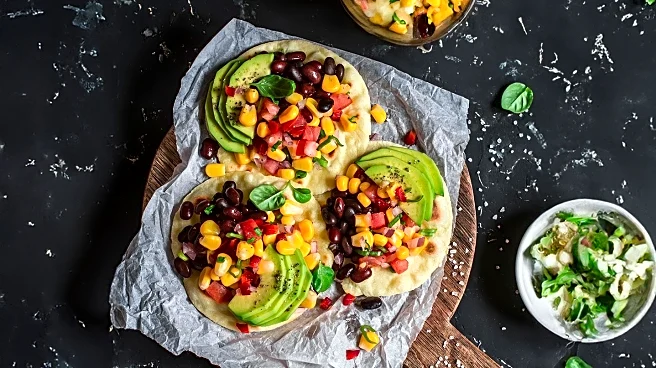What's Happening?
Chefs Isabel Coss and Matt Conroy, known for their work at the restaurant Pascual in Washington D.C., have shared insights into making tuna tostadas, a classic Mexican dish, at home. The dish, popular in coastal and central regions of Mexico, features a blue corn tostada topped with avocado, tuna, citrus, onions, and herbs. Coss emphasizes the dish's versatility and appeal to both those familiar and unfamiliar with Mexican cuisine. The chefs adapt the recipe based on the availability of tuna, using either yellowfin or bluefin, and often incorporate a salsa macha for added flavor. The recipe shared includes sushi-grade tuna, tostadas, avocados, limes, tangerines, serrano chile, and cilantro, with a unique twist of miso-mustard guacamole.
Why It's Important?
The sharing of this recipe highlights the growing trend of restaurant-quality dishes being adapted for home cooking, allowing food enthusiasts to recreate gourmet experiences in their own kitchens. This trend is significant as it democratizes access to high-quality culinary experiences, previously limited to dining out. It also reflects a broader cultural appreciation for Mexican cuisine, showcasing its adaptability and appeal across different demographics. For the restaurant industry, this trend can serve as a marketing tool, encouraging diners to explore new dishes and potentially increasing interest in dining out to experience the original creations.
What's Next?
As more chefs share their recipes, home cooks may continue to experiment with diverse cuisines, potentially leading to a greater demand for specialty ingredients in local markets. Restaurants might also see an increase in patrons who, after trying these dishes at home, seek out the authentic restaurant experience. This could lead to collaborations between chefs and grocery stores or online platforms to provide curated ingredient kits, further bridging the gap between home cooking and professional culinary arts.
Beyond the Headlines
The adaptation of restaurant dishes for home cooking raises questions about intellectual property and the balance between sharing culinary knowledge and maintaining a restaurant's unique offerings. It also highlights the cultural exchange facilitated by food, as traditional dishes are reimagined and introduced to new audiences, fostering a deeper understanding and appreciation of diverse culinary traditions.











